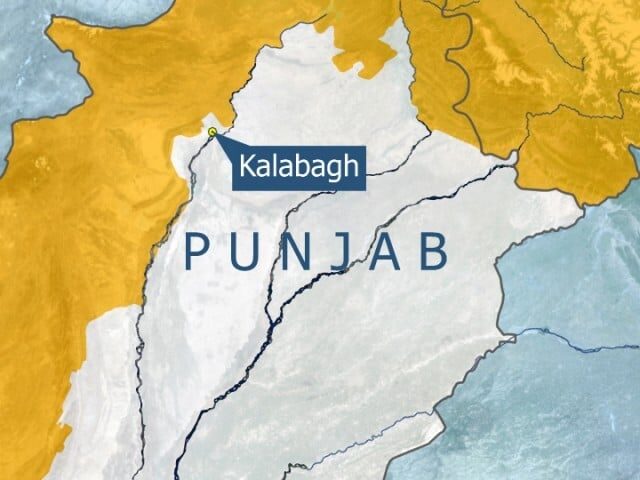- Kalabagh dam, an outcome of expert level rumination, is a multi-purpose project that can resolve the critical economic crises of the country, yet, has plunged in the clutches of political intrigues.
- The sustenance of Pakistan mainly depends on water, which needs to be stored and utilized properly to address the emerging agricultural and power needs.
- The project has invited severe opposition and criticism from majority of the quarters of the state.
- Sindh, one of the affected parties, has challenged the technical foundations of the proposal and brands it as “worthless”.
- Proceeding with the dam in the face of such a strong resistance could have unhealthy repercussions for the integrity of the country
- If consensus becomes inaccessible, the project can be dropped as a gesture of rationalism to pursue the alternative options to serve the purpose.
Pakistan is a third world country that is situated in the north-western part of South Asia. She is presently pursuing the path of development at a rapid pace. During the last fiscal year, she experienced a miraculous economic growth rate of eight percent. The credit of this achievement goes to her agriculture and industrial sector for their amazing performance. She is also confronting a high population growth rate which is an ugly monster that threats her limited resources. Now the challenge for the country ahead, is to address the emerging needs of the masses and sustain that similar economic growth rate over the upcoming years to reap its benefits. The country is basically an agricultural and industrial country. It is blessed with several mineral resources. Among all them, water enjoys an prominent position. The country faces mountainous region in the north, whence water flows down into her canal network to irrigate lands. A major proportion of her energy needs is produced by dams. Currently, its only water whose efficient usage and storage can bring a breakthrough and assist the country in such crises.
After prolonged cognition and meditation, the sagacious administration of Pakistan has come up with a mind-blowing brainchild “The Kalabagh Dam” that can succour the country out of this impasse. Kalabagh Dam is a multi-purpose dam that will store surplus water to irrigate new lands, generate cheap energy and deter floods. This dam is proposed to be constructed at a site named Kalabagh near NWFP. Decision-makers claim that annually 35MAF of surplus water is wasted into the Arabian Sea due to its inefficient storage and usage. Masterminds behind the dam are of the opinion that Kalabagh Dam will store up to 6.1 MAF of surplus water, which is presently being wasted, and use it efficiently to irrigate nearly 2.4 million acres of new land, generate 11,750KWH of cheap energy and minimize the destruction caused by floods by deterring them. Thus, if the dam is given a touch of reality, it can resolve the country’s dilemma. Despite being in national interest, this project has plunged into political intrigues and controversies. Kalabagh Dam has invited strong criticism from the majority quarters of the state. Ergo, the dam has not been constructed yet, in spite of the fact that it was planned in 1953. Even today, consensus on the project is not in sight. Punjab, one of the federating units, has been kind enough to ratify the proposal. Punjab trusts the central government on its resettlement plan for the people that will have to be displaced for construction work. It is a sincere gesture of good-will, indeed. However, the response from rest of the quarters of the country has been disheartening.
All other three provinces have raised a huge hue and cry against the dam. NWFP, one of the challengers, fears inundation at her fertile lands, water-logging and salinity, and inhumane rehabilitation of the inhabitants of Kalabagh. It is widely held that under extreme conditions, the dam could overflow and flood NWFP severely. Besides that, the storage of water in the dam could avert drainage water which will result into water-logging and salinity problems. NWFP also has reservations about the integrity of the Government, thus, it does not trust the commitments of the Central Government. Though the resettlement plan of the Government seems very attractive, but, the dislocation of Tarbela people serves as a witness of indifference of the administration. Tarbela dam was constructed in 1970s and it’s really a surprising fact that the denizens of Tarbela still haven’t been stationed properly, even after three decades. The dislocated people have turned into wandering wayfarers. Balochistan’s resistance is based on the apprehensions that the flow of water into her territory will be curtailed after the remodeling of the Pat Feeder canal, which is a part of the proposal. Sindh is the affected party that has expressed the strongest opposition. Sindh accuses the dam of depriving her of the last drop of her rightful share of water, which will progressively transform a green fertile province into a dehydrated desert. The dam is opined to reduce flow of fresh water into the Indus Delta which will have disenchanting effects on mangrove forests and fisheries of the region. It is also reckoned that the dam will prevent flow of floods that help in cultivating inundation-irrigated areas and desilting the Indus Delta.
Sindh, in fact, challenges the basic technical foundations of the project. Sindh asserts that as soon as; barrages and canals are restructured for efficient water usage; India takes her rightful share of water from the western rivers (accorded to her in Indus Accords 1991); and after the completion of construction Indian of dams on the eastern rivers, there will be no surplus water to store. Then the dam will only store the water of Sindh. Historical record of the central government in treating the smaller provinces has been quite unpleasant and Sindh does not have enough confidence in the central government to accept a promise of undeterred flow of water. In case flow of fresh water to the Arabian Sea is reduced; saline water of the sea will start intruding cultivable lands of Sindh and render them useless. Major proportion of Sindh’s underground water is already saline, further intrusion of the sea will only aggravate matters. Since there will be no surplus water to store, there will be no new cultivation at all. It would be only possible to irrigate new lands at the cost of Sindh’s water which will be injustice to this province. All in all, there would be no extra yield. Sindh also has reservations about Central Government’s claim that this dam will produce cheap electricity. It is widely known that just the resettlement plan alone will cost nearly Rs. 2 billion with an exorbitant interest rate, leave aside the construction cost. This project will simply prove to be counterproductive in this regard. The third purpose of this project i.e. prevention of floods, is also criticized. Sindh opines that floods are indispensable for balancing the ecosystem, cultivation of flood-cultivated areas and sustenance of mangrove forests and fisheries. Moreover the dam will not be able to deter super floods that occur every 5th year. The citizenry of Sindh is ready to bear the brunt of floods but prefer not to give their assent on this dam.
The resistance of provinces might be altogether based on a prejudice against the central government. However to some extent it is justified. The past feats of central government in ill-treating smaller provinces are eye-witness landmarks. Smaller provinces don’t have the slightest degree of trust in commitments of central government and accuse it of favouritism/apartheid. The best strategy for the central government in such state of affairs would be to earn the confidence of the smaller provinces first. The central government can grant favours to smaller provinces, bring them to the table for peaceful talks and promote confidence building measures (CBMs) to win their hearts. When central government successfully creates respect among these provinces, the central government can guarantee them unhindered flow of water along with protection from any sprouting side-effects of the dam. This project can only enjoy success if it is based on consensus from all the quarters, else, it will end in fiasco. The proposal can be a cause of destruction of the fabric of the country. Dams are indispensable indeed, but it would be sheer injustice to ram the project down the throats of the affected parties. Federal government cannot be such unresponsive to the voices of federating units like this. Such an undemocratic and arbitrary action can lead the country to the verge of collapse. History bears witness, Pakistan went through a vivisection in 1971 due to unjust and intransigent attitude towards its eastern wing. Such a course would be against the notion of good-governance. If the dam is to be built, there is no way out except achieving consensus, since we can not afford any further fragmentation.
If God disposes and consensus becomes inaccessible after painstaking efforts, it would be prudent to drop the project and pursue the alternatives rather than being hell-bent on it and waste more time. Kalabagh dam is unacceptable to other provinces; however they are not opposed to a carry-over dam that will store surplus water only if it is available. This way, Sindh’s apprehensions of possible injustice will die a natural death. Bhasha and Skardu dams could also serve the purpose well. It is widely held that these dams will take longer compared to Kalabagh and the country is in immediate need of other sources for power generation, so this option is unfeasible. Kalabagh Dam has been a bone of contention between the provinces and central government. It hasn’t been implemented since 1953 due to strong opposition from the provinces. Thus implementing the plan after a failure of 52 years will yield the same result as it is destined to do i.e. fragmentation. Apart from everything, dams are not the end at all. There are several other countries that do not have dams to generate their power needs and enhance their agriculture yet they are kissing the peaks of development. Those doors are also open for Pakistan. Hydro-energy is not the only option. For other substitute sources of energy generation, a good scientific research should be conducted. Pakistan has a large amount of coal, which can be used to serve the purpose. Aside that, wind is available in abundant quantity at the coastal areas. Windmills can be installed in those regions. These are the two most realistic alternative options for Pakistan that are capable of providing cheap and risk-free energy.

















